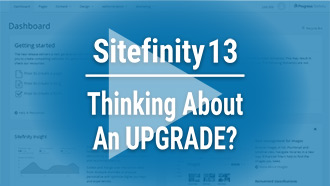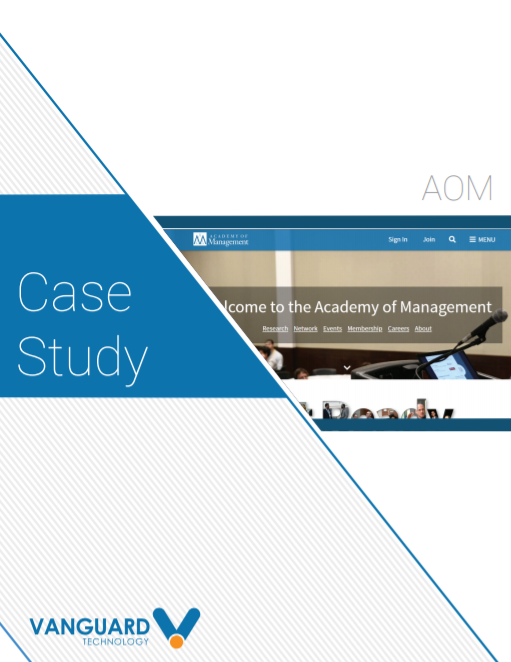Web Smarts - Business Savvy
We’ve been building websites since 1998
We are trusted advisors to Over 50 Active Clients within several industries including associations and nonprofits, healthcare, financial services, retail, B2B and more.

We Are
Trusted
Partners
After we deliver a quality website on time and within your budget, we will be there for when it really counts. We will be proactive, consultative and strategic after we launch your website.

We Are
Integration
Experts
We’ve integrated with virtually every AMS system on the market as well as most LMS, publication, advocacy and career center applications. Our company was founded on custom development.

We build websites that are easy to edit, manage and design using the best content management system on the market, Sitefinity CMS.
We Provide A Full Spectrum Of Services
Our Clients Are Our Partners....
John Wurm

The team at Vanguard helped us think about our digital presence from the perspective and needs of our users, while holding true to the values our organization espouses.
Connect With Us
Improve Your Webcopy

The
Vanguard View
Technology articles about one topic from the perspective of Leadership, Marketing and IT professionals .
What is Google Analytics Event Tracking and What can it do for your Web Documents?
In a previous blog article, we discussed the importance of enabling the Google Analytics Site Search feature, which provides resourceful information regarding the keywords within your website's search box that users are searching for. Continuing on the topic of Google Analytics reporting, there are a plethora of reports that can be configured to provide additional insight into how your audience is interacting with your content. One example of this is document click reporting. This report can help you understand how many times a particular document within your website was interacted with, and ultimately selected within Sitefinity CMS.
This level of reporting/tracking can be configured using Google Analytics Event tracking, which is a feature that allows you to record interactions with elements within your website. Ultimately, when configuring Event tracking, one simply applies snippets of code on a website that contain certain attributes. Defining these attributes is key as specificity allows you to consume and read the data efficiently.
To setup document Event tracking, the following elements must be configured:
- Category: This is the label name that you give an object that needs to be tracked.
- Action: This is the type of event interaction such as ‘click.’
- Label: This is the physical label that represents the type of action that is taken when selecting a document such as a ‘download.’
In a real-world example, here’s how I’d set up all three attributes when setting up document event tracking:
- Category = I would create categories for each type of document format that I want to track such as; PDF, DOC, DOCX, XLS, and XLSK
- Action = I’d give this a strong attribute that represents what you hope a user would do, such as perform a mouse ‘click.’
- Label: Similar to the previous item, a descriptive name should be given such as ‘download.’
The code snippet that ultimately gets added to your website ensures that the format of your document URLs triggers the following format:
<a href=”/documents/thisisanexample.pdf” onClick=”ga(‘send’, ‘event’, ‘pdf, ‘click’, ‘download’);”>This is an Example</a>
Now, of course, you can get as descriptive as you want with your naming conventions and labels, but ensure that you are adhering to some standard so that when you review the data, it resonates with what you are trying to obtain from your Event tracking. Configuring Event tracking may seem like a daunting task, but once you understand the core principles, and how all of the attributes function, you’ll quickly find that setting up various Events is simpler than you likely initially imagined.
If you’d like to learn more about document Event tracking and are interested in installing the code on your website, please reach out to your Client Service Manager for assistance.
Vanguard Tips & Tricks
We provide helpful hints you never knew you needed for our clients. Check out "Vanguard Tips & Tricks" to learn quick and simple hacks to make managing your website easier than ever.
What is Google Analytics Event Tracking and What can it do for your Web Documents?
In a previous blog article, we discussed the importance of enabling the Google Analytics Site Search feature, which provides resourceful information regarding the keywords within your website's search box that users are searching for. Continuing on the topic of Google Analytics reporting, there are a plethora of reports that can be configured to provide additional insight into how your audience is interacting with your content. One example of this is document click reporting. This report can help you understand how many times a particular document within your website was interacted with, and ultimately selected within Sitefinity CMS.
This level of reporting/tracking can be configured using Google Analytics Event tracking, which is a feature that allows you to record interactions with elements within your website. Ultimately, when configuring Event tracking, one simply applies snippets of code on a website that contain certain attributes. Defining these attributes is key as specificity allows you to consume and read the data efficiently.
To setup document Event tracking, the following elements must be configured:
- Category: This is the label name that you give an object that needs to be tracked.
- Action: This is the type of event interaction such as ‘click.’
- Label: This is the physical label that represents the type of action that is taken when selecting a document such as a ‘download.’
In a real-world example, here’s how I’d set up all three attributes when setting up document event tracking:
- Category = I would create categories for each type of document format that I want to track such as; PDF, DOC, DOCX, XLS, and XLSK
- Action = I’d give this a strong attribute that represents what you hope a user would do, such as perform a mouse ‘click.’
- Label: Similar to the previous item, a descriptive name should be given such as ‘download.’
The code snippet that ultimately gets added to your website ensures that the format of your document URLs triggers the following format:
<a href=”/documents/thisisanexample.pdf” onClick=”ga(‘send’, ‘event’, ‘pdf, ‘click’, ‘download’);”>This is an Example</a>
Now, of course, you can get as descriptive as you want with your naming conventions and labels, but ensure that you are adhering to some standard so that when you review the data, it resonates with what you are trying to obtain from your Event tracking. Configuring Event tracking may seem like a daunting task, but once you understand the core principles, and how all of the attributes function, you’ll quickly find that setting up various Events is simpler than you likely initially imagined.
If you’d like to learn more about document Event tracking and are interested in installing the code on your website, please reach out to your Client Service Manager for assistance.
Case Studies
Vanguard conducts thorough preliminary investigative work to ensure your website is built to cater specifically to your target audience and meet your organization’s goals. Check out some of the case studies on some of our most recent client success stories.
What Can Vanguard Do For You?
As your organization grows and evolves, your website should as well. Whether you are looking to generate more traffic, implement custom functionality, mobile compatibility, integrate your systems, or give your site a complete redesign, Vanguard Technology is your go-to web partner. Reach out to us with your current concerns with your website, and our experts will happily provide a solution.










Leave a commentOrder by
Newest on top Oldest on top